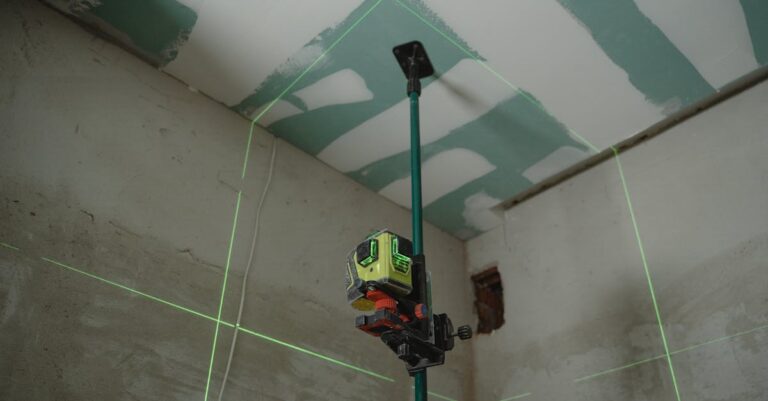Installing a new hot water heater can feel like waiting for a pot to boil—except this pot is a little more complicated and a lot less forgiving. After all, no one wants to jump in the shower only to be greeted by a blast of icy water. So how long does it actually take for that shiny new unit to heat up?
Understanding the heating process can save you from the dreaded cold shower experience. Whether you’re a seasoned DIYer or a first-time homeowner, knowing what to expect can make all the difference. So let’s dive into the details and uncover the timeline for your hot water heater to transform from a mere appliance into your personal oasis of warmth.
Table of Contents
ToggleFactors Affecting Heating Time
Heating time for a hot water heater varies due to multiple factors. Understanding these elements helps gauge how long it takes to enjoy hot water after installation.
Type of Hot Water Heater
Different types of hot water heaters heat water at varying speeds. Tankless systems, for instance, provide instant hot water on demand, while tank models require time to fill and heat the water. Electric heaters typically take longer than gas units to reach desired temperatures. Knowing the type influences expectations for heating time significantly.
Heater Size and Capacity
Heater size and capacity directly affect how quickly water warms up. Larger tanks hold more water, resulting in longer heating periods compared to smaller units. Additionally, a higher capacity heater can supply hot water for longer durations, despite longer initial heating times. Choosing an optimal size based on household needs impacts overall efficiency and convenience.
Initial Water Temperature
The initial temperature of incoming water plays a substantial role in heating time. Cooler water straight from the main supply takes longer to reach desired temperatures. Conversely, warmer incoming water reduces heating duration significantly. Awareness of local water temperatures aids homeowners in estimating how long the heater will take to deliver hot water at home.
Typical Timeframes for Different Heater Types
Various hot water heater types have distinct timeframes for heating water after installation. Understanding these differences helps homeowners anticipate when they can access hot water.
Tank Water Heaters
Tank water heaters typically take between 30 to 40 minutes to heat water after installation. These models heat a full tank of water, often ranging from 30 to 80 gallons. The size of the tank directly affects heating time; larger capacities require more time. The initial temperature of incoming water also plays a role; cooler water extends heating duration. Expect to wait longer if the water source is significantly cold.
Tankless Water Heaters
Tankless water heaters provide hot water almost instantly. Installation usually results in hot water availability in just a few minutes since these systems heat water on demand. Tankless models maintain efficiency, regardless of the number of faucets being used simultaneously. Homeowners enjoy a steady supply of hot water without the need for a large tank. Energy savings often accompany this quick heating feature, making it a popular choice.
Heat Pump Water Heaters
Heat pump water heaters typically require 1 to 2 hours to heat water fully. These systems extract heat from the air or ground, resulting in a more energy-efficient process. The efficiency of heat pump models is notable, but longer heating times should be expected. Cooler environmental temperatures can further increase heating duration. Homeowners appreciate the energy savings along with the efficiency, despite the wait for hot water.
Steps to Optimize Heating Time
Optimizing heating time for a hot water heater enhances efficiency and comfort. Consider the following strategies.
Proper Installation Techniques
Correct installation plays a vital role in heating efficiency. Maintaining proper electrical connections ensures the unit operates at full capacity. Additionally, aligning ventilation pipes correctly allows for better airflow in gas models. Choosing the right location for installation, away from cold drafts, assists in maintaining water temperature. Following manufacturer guidelines promotes optimal performance. Inspecting all components during installation helps identify potential issues early, preventing delays in heating.
Insulation Considerations
Insulation significantly impacts heating duration. Insulating hot water pipes reduces heat loss during water delivery. Using high-quality insulation materials for the heater tank prevents unnecessary heat escape. Reducing the temperature differential between incoming and outgoing water minimizes heat loss. Installing a water heater blanket enhances energy conservation, especially in colder environments. Regularly checking insulation integrity prevents heating inefficiencies. Making these adjustments speeds up heating times, ensuring a quicker supply of hot water.
Common Misconceptions
Misunderstandings about hot water heaters can lead to frustration. Some people believe all systems provide instant hot water, overlooking the differences between heater types.
Instant Hot Water Availability
Tankless water heaters do deliver hot water almost immediately. This on-demand heating capability often misleads consumers into thinking all units perform similarly. Tank models, however, require time to fill and heat water, typically taking 30 to 40 minutes. Depending on the tank size and incoming water temperature, initial heating times vary significantly. Users of larger tanks experience longer wait times, as these models need to heat more water. Knowing this distinction helps homeowners set realistic expectations for their hot water supply.
Influence of Local Climate
Local climate plays a critical role in heating time. Cold environments might cause incoming water temperatures to drop significantly, thus prolonging heating durations. In warmer climates, incoming water temperatures tend to be higher, resulting in quicker heating times. Understanding the local climate enables homeowners to estimate heating periods more accurately. For instance, a heat pump water heater might take 1 to 2 hours to reach optimal temperatures in a cooler area, while in a warmer setting, it could perform more efficiently. Recognizing these climatic influences helps users appreciate the variability in heating times across different regions.
Understanding how long it takes for a hot water heater to heat up after installation is essential for any homeowner. The heating time varies based on factors like the type of heater and the incoming water temperature. By knowing these details, individuals can set realistic expectations and avoid frustrations during daily routines.
With the right installation techniques and maintenance, homeowners can optimize their hot water systems for better efficiency. Whether opting for a tank or tankless model, recognizing the differences in heating times allows for informed choices that enhance comfort and convenience. Ultimately, being proactive about these factors ensures a smoother transition to enjoying hot water in the home.



